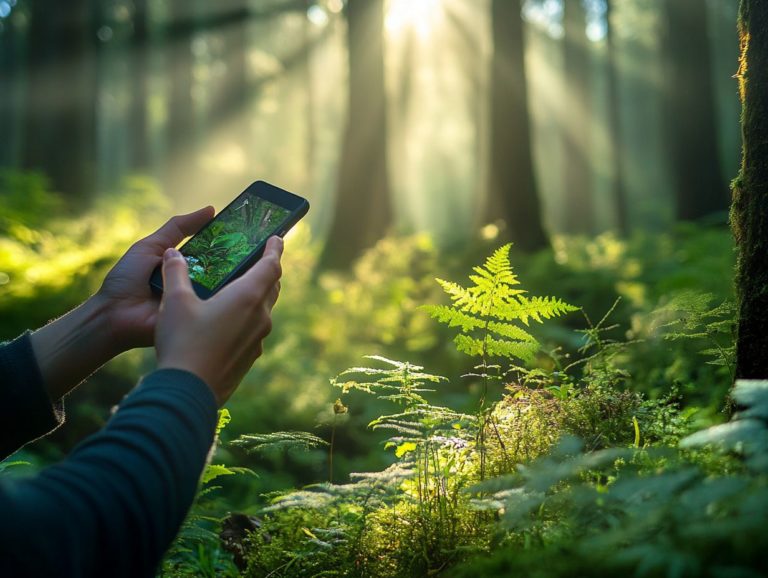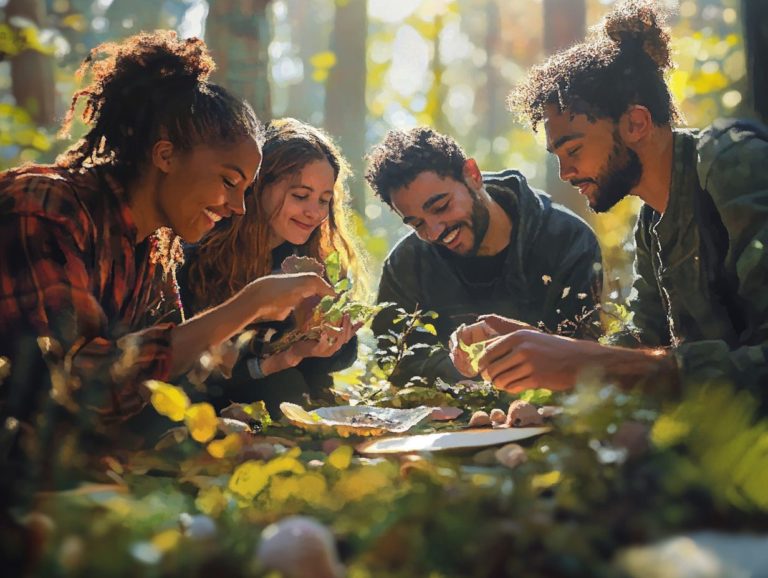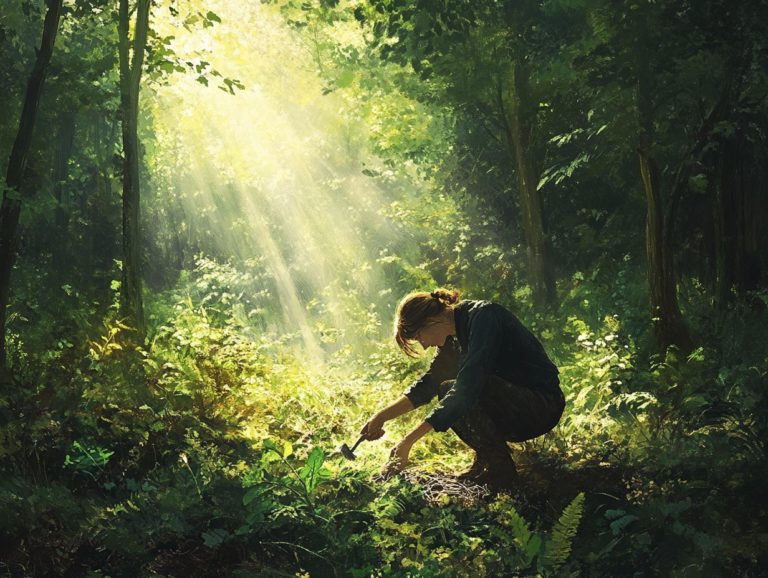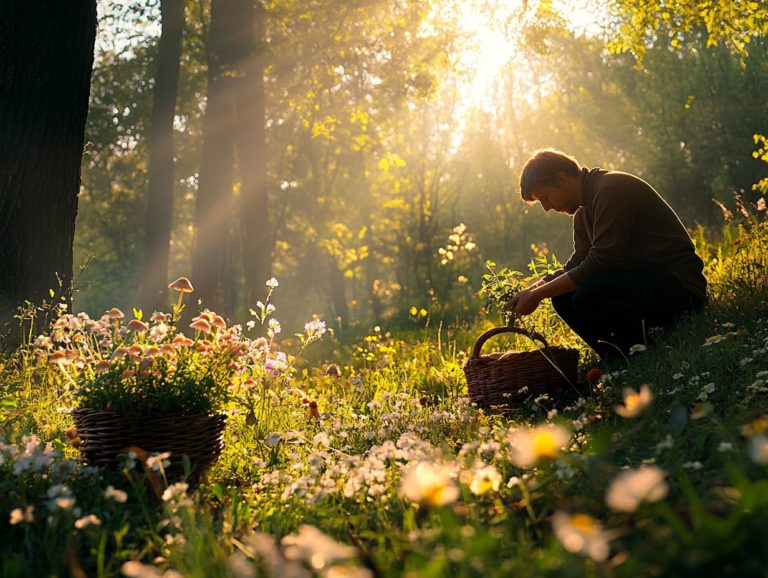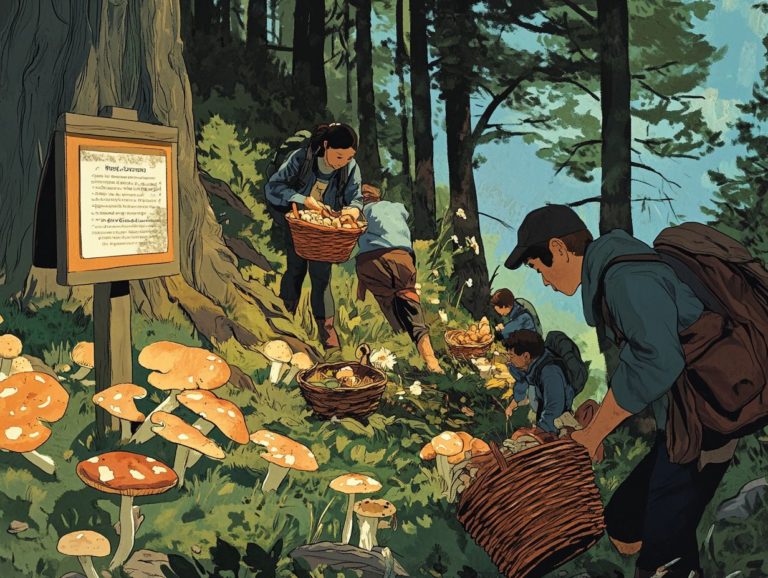The Dos and Don’ts of Foraging
Foraging is more than just a trend; it s an exciting way to connect with nature and discover its hidden treasures!
Venturing into the realm of foraging demands both knowledge and prudence. This guide will illuminate the essential dos and don’ts, offering you best practices for safe harvesting and the art of identifying edible plants.
It also covers the ethics of foraging and the importance of sustainability, allowing you to relish nature s offerings responsibly. Whether you re just starting your foraging journey or have some experience under your belt, there s valuable insight awaiting you here.
Contents
- Key Takeaways:
- The Dos of Foraging
- The Don’ts of Foraging
- Identifying Edible Plants
- Harvesting and Preparing Foraged Foods
- Foraging Ethics and Sustainability
- Frequently Asked Questions
- What is foraging and why is it important to understand the dos and don’ts?
- What are some common mistakes to avoid while foraging?
- What are some dos when it comes to foraging?
- Is it important to properly identify and harvest plants while foraging?
- Are there any ethical considerations to keep in mind while foraging?
- What should I do if I accidentally consume a poisonous plant while foraging?
Key Takeaways:
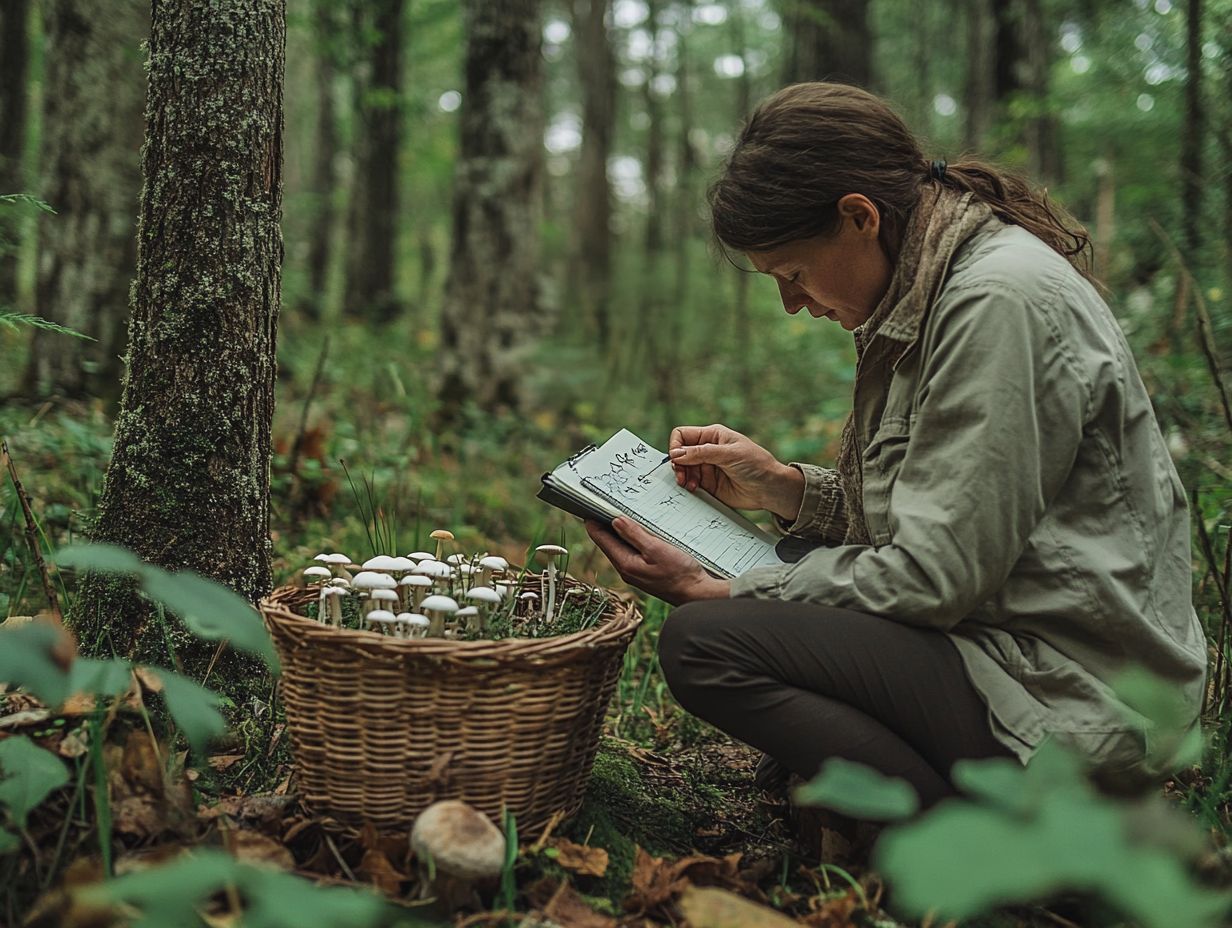
- Always research and follow safe foraging practices to keep yourself safe!
- Use proper techniques and tools for identifying edible plants before harvesting and consuming them.
- Practice responsible foraging ethics and sustainability to ensure the preservation of natural resources.
What is Foraging?
Foraging is the timeless art of searching for and gathering wild foods, from edible flowers to medicinal herbs and various plant species. It allows you to cultivate a profound connection to nature while promoting self-sufficiency.
This practice carries historical significance, harkening back to your ancestors who depended on local plants for food and healing. As a modern forager, you can reap its benefits by exploring seasonal offerings that ebb and flow with nature’s rhythms. Along the way, you ll forge meaningful bonds within your community through shared experiences and the exchange of knowledge.
Participating in workshops and foraging groups not only deepens your understanding of the variety of plant and animal life but also aligns you with a movement that emphasizes health and sustainability. By embracing wild food sources, you can play a role in combating food insecurity, ensuring access to fresh, nutritious options while nurturing a sense of stewardship for the environment.
The Dos of Foraging
As you embark on the journey of foraging, it’s crucial to embrace sustainable practices that honor the environment while simultaneously enhancing food security and public health. To ensure you’re following these principles, it’s important to understand foraging ethics. This mindful approach ensures that your foraging efforts contribute positively to the ecosystem and the community at large.
Best Practices for Safe Foraging
Safe foraging is essential for ensuring that the wild foods you collect are not only edible but also free from harmful substances. This ensures you get the health benefits and nutrition from wild foods.
To fully embrace this rewarding yet sometimes perilous endeavor, you should dive into thorough research on the local flora, utilizing field guide books that help you identify plants and fungi in the wild and online resources specifically designed for your region. Additionally, it’s important to understand ethical guidelines for foraging. Joining local foraging groups or workshops led by seasoned experts is also a smart move; they can provide invaluable insights into identifying safe varieties.
Recognizing seasonal variations in plant growth is vital for sustainable harvesting. Don t forget to carry essential tools like a knife for precise cutting and a field notebook for documenting your findings. This not only enhances your foraging experience but also keeps safety at the forefront.
The Don’ts of Foraging
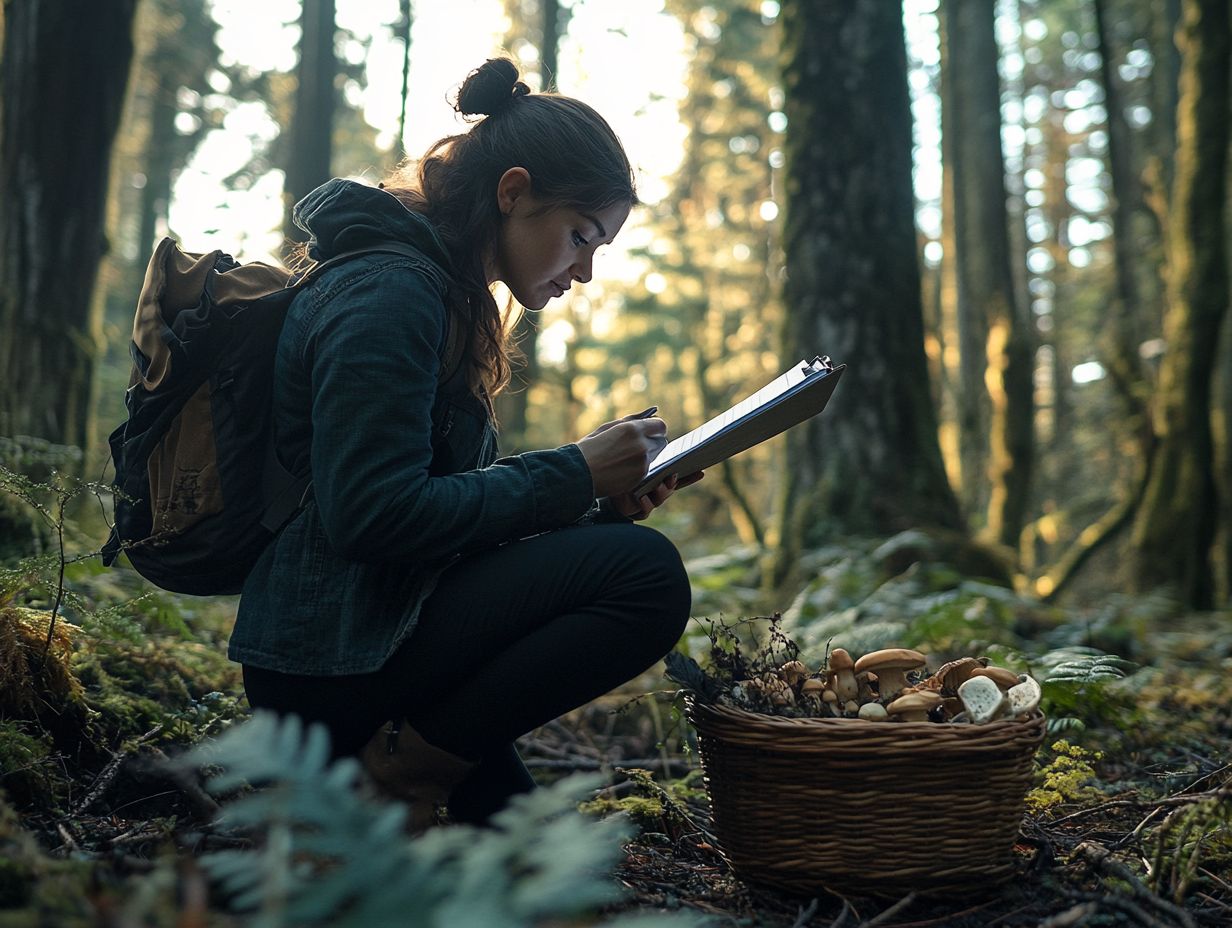
Avoiding common mistakes is crucial when you venture into foraging. Understanding what to look for when foraging is essential to safeguard your health and ensure that your foraging experience yields positive outcomes.
For a successful start, consider joining a local foraging group or embarking on your own foraging adventure!
Potential Dangers and Mistakes to Avoid
You need to stay vigilant about potential dangers when foraging, such as toxic plants and environmental contaminants that can jeopardize both food security and the safety of your foraged finds.
Take, for example, the Stinging Nettle; it can be risky if mishandled or improperly prepared. Misidentifying edible plants is another serious concern that could have dire health consequences.
It s essential for anyone venturing into the realm of wild food to familiarize themselves with common look-alikes that could be harmful.
Engaging with trusted guides, participating in local workshops, or consulting comprehensive resources can equip you with the knowledge you need.
Having quick access to emergency contacts, like Poison Control, is also vital. It ensures that if a misstep happens, you can get immediate assistance, underscoring the importance of cautious and well-informed foraging practices.
Identifying Edible Plants
Identifying edible plants is an invaluable skill for any forager.
It involves recognizing a diverse array of species. These include vibrant edible flowers and strong herbs that can help with health, both of which play a significant role in enhancing nutrition and overall well-being.
Tools and Techniques for Plant Identification
Utilizing the right tools and techniques for plant identification can truly elevate your foraging experience.
This allows you to confidently recognize wild foods and embrace sustainable harvesting practices.
Equipping yourself with high-quality field guides will provide you with in-depth insights into plant characteristics.
Smartphone apps can deliver on-the-go identification assistance with just a few taps.
Paying attention to subtle details like leaf shapes, growth patterns, and specific plant habitats can significantly sharpen your recognition skills.
Participating in local workshops enhances your understanding and connects you with like-minded individuals who share your passion for nature.
Community resources, such as nature clubs or online forums, can serve as invaluable hubs for sharing knowledge and experiences.
This cultivates a collaborative learning environment that enriches your entire foraging journey.
Harvesting and Preparing Foraged Foods
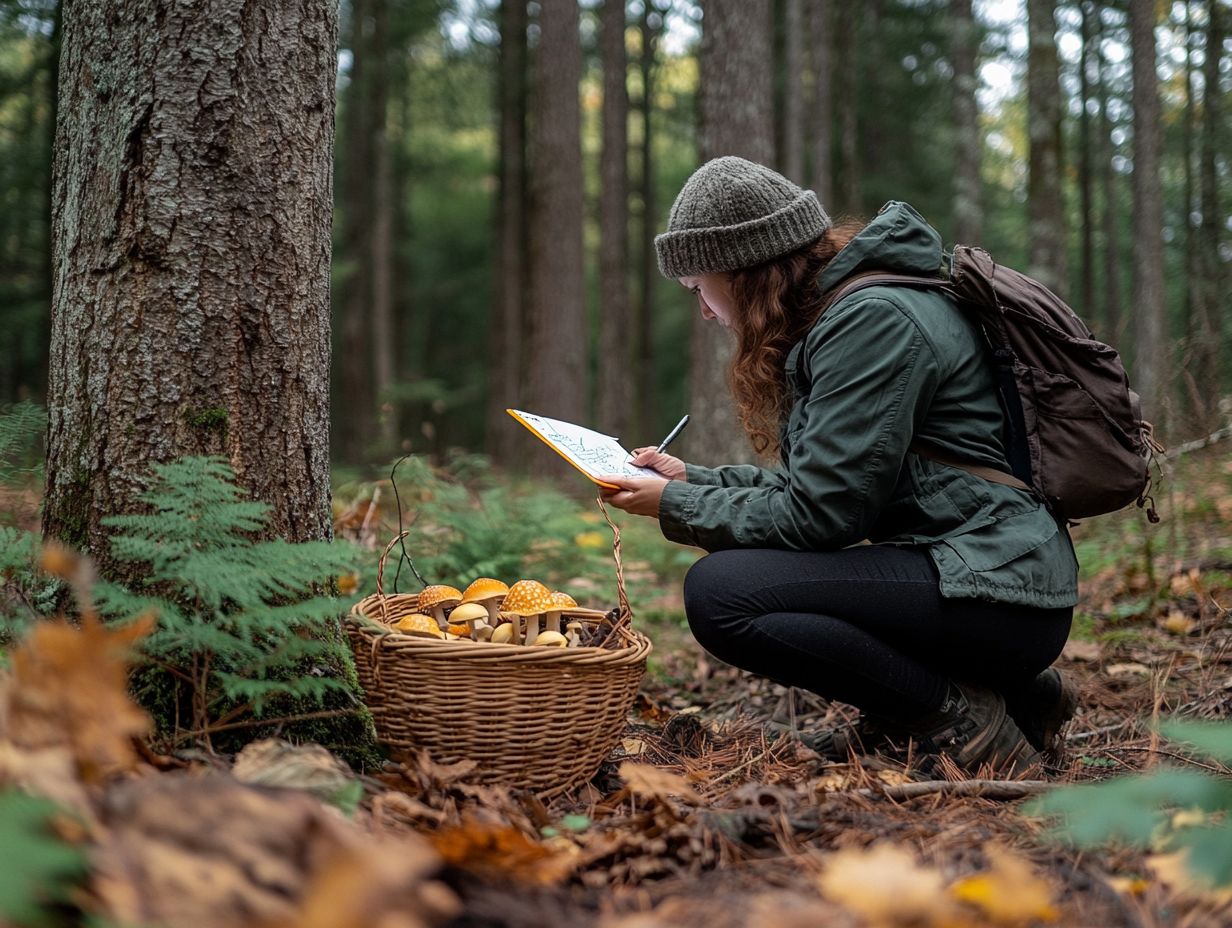
Harvesting and preparing foraged foods demands a keen understanding of the right techniques.
This knowledge is essential not only for ensuring safety but also for maximizing the nutritional benefits of the wild plants you gather.
Proper Techniques for Safe Consumption
Ensuring you use proper techniques for the safe consumption of foraged foods is essential for protecting your health and avoiding common mistakes in foraging.
By adhering to specific guidelines, you can significantly minimize the risk of contamination and adverse health effects.
Start with thorough cleaning methods to remove any soil residues or pests that might cling to those edible plants.
Cooking your foraged finds is just as crucial; it helps eliminate harmful microorganisms and enhances digestibility.
Pairing these wild ingredients with other healthful foods not only elevates the flavors but also enriches your overall diet.
This delivers a balanced mix of vitamins, minerals, and antioxidants.
This mindful approach to foraging deepens your appreciation for nature’s bounty and contributes to a well-rounded, nutritious meal.
Foraging Ethics and Sustainability
Foraging ethics and sustainability are essential principles that guide your practices.
They nurture community engagement and promote responsible stewardship of ecosystems.
Embracing these values ensures that you respect the environment and cultivate a deeper connection with the community and the natural world around you.
Ready to start your foraging adventure? Equip yourself with the right knowledge and make the most of nature s offerings!
Responsible Foraging Practices
Responsible foraging supports sustainability. It enhances community health and food security while fostering a harmonious relationship with nature.
Follow foraging laws to keep your harvesting legal and ethical. This minimizes harm to native ecosystems and ensures you have access to the ultimate checklist for foraging edibles.
Learn about the seasonal availability of plants and fungi. This helps you find them at their peak for the best flavor and future growth.
Join local foraging events to share knowledge and tips. It s a great way to meet new friends.
Connect with local organizations to learn best practices. This will help you become a better steward of the environment.
Frequently Asked Questions
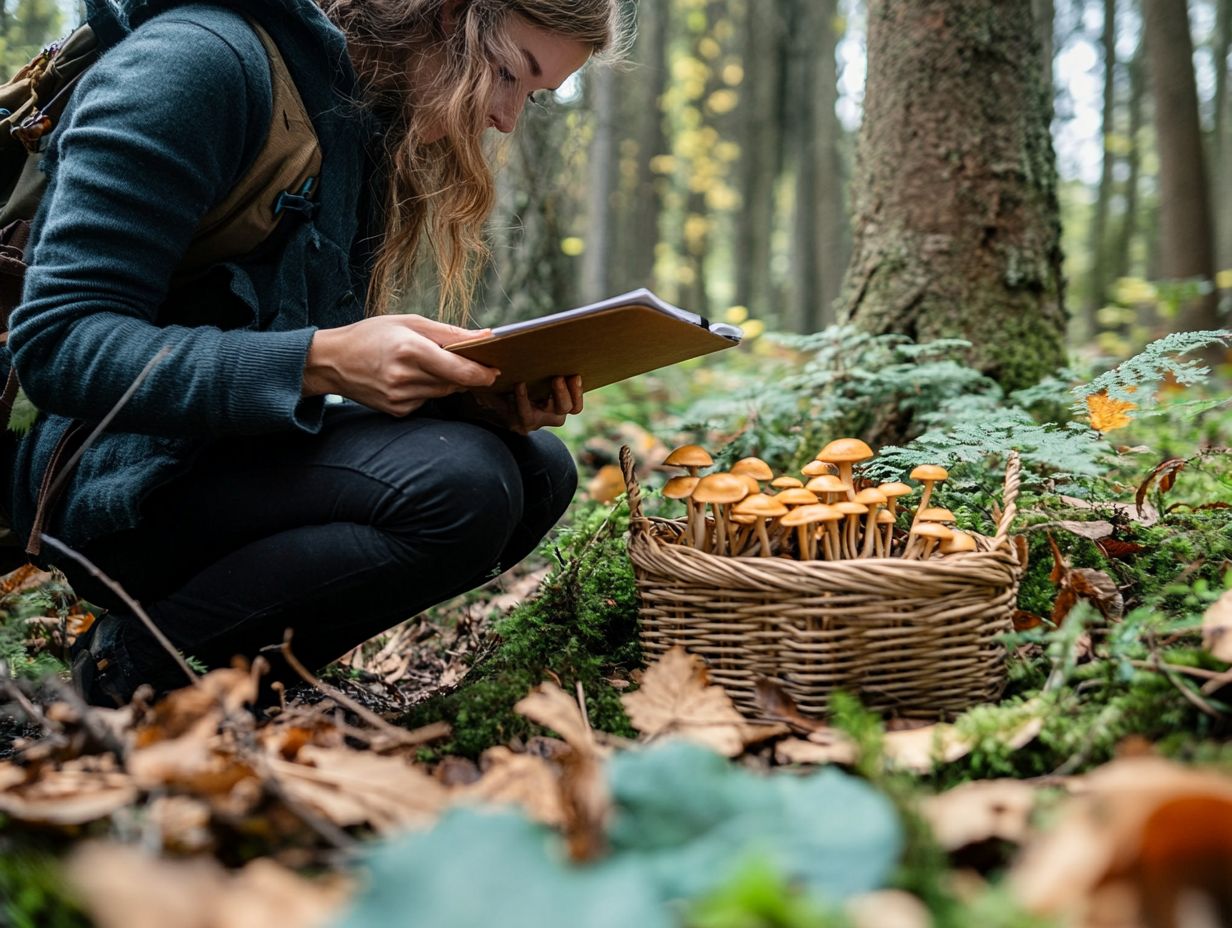
What is foraging and why is it important to understand the dos and don’ts?
Foraging is the act of searching for and gathering wild food. It is important to understand foraging etiquette to ensure the safety and sustainability of both the forager and the environment.
What are some common mistakes to avoid while foraging?
Some common mistakes to avoid while foraging include mistaking poisonous plants for edible ones, damaging the environment, and taking more than you need. To learn more about this topic, check out what beginners should know about foraging.
What are some dos when it comes to foraging?
Some dos when foraging include researching and learning about the plants in your area, bringing proper tools and equipment, and foraging with a knowledgeable guide or experienced forager. Additionally, it’s wise to familiarize yourself with safety tips for foraging. Consider exploring urban agriculture and seasonal foraging techniques.
Is it important to properly identify and harvest plants while foraging?
Yes, it is crucial to properly identify and harvest plants while foraging. This ensures that you are consuming safe and edible plants, such as medicinal herbs and edible flowers, and also helps to maintain the balance of the ecosystems.
Are there any ethical considerations to keep in mind while foraging?
Yes, it is important to be respectful of the environment and only take what you need. Properly dispose of any waste and avoid disturbing or damaging the natural habitat, promoting sustainable foraging practices and community engagement.
What should I do if I accidentally consume a poisonous plant while foraging?
Act fast! If you consume a poisonous plant, seek medical help immediately. Your health is the top priority. Contact Poison Control for guidance. It is also helpful to bring a book or guide on local plants with you when foraging, such as Adele Nozedar’s works, to help identify any potential hazards and learn about local wild foods and their medicinal values.

